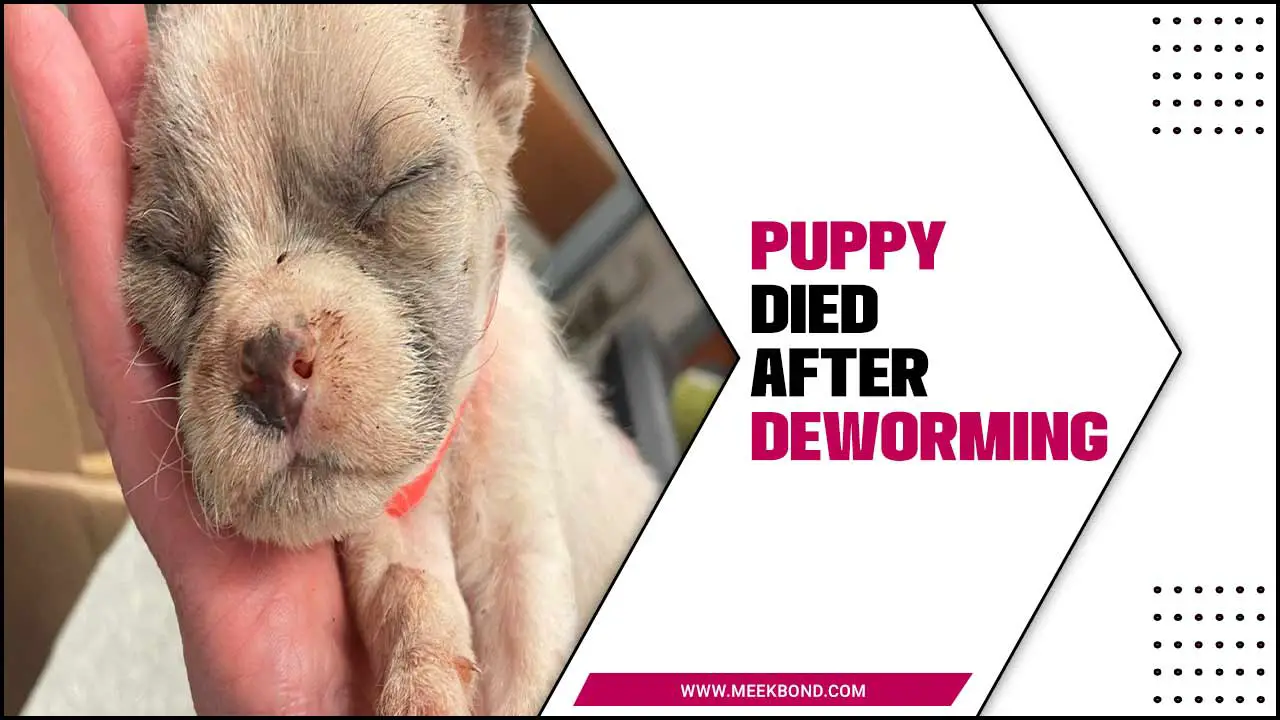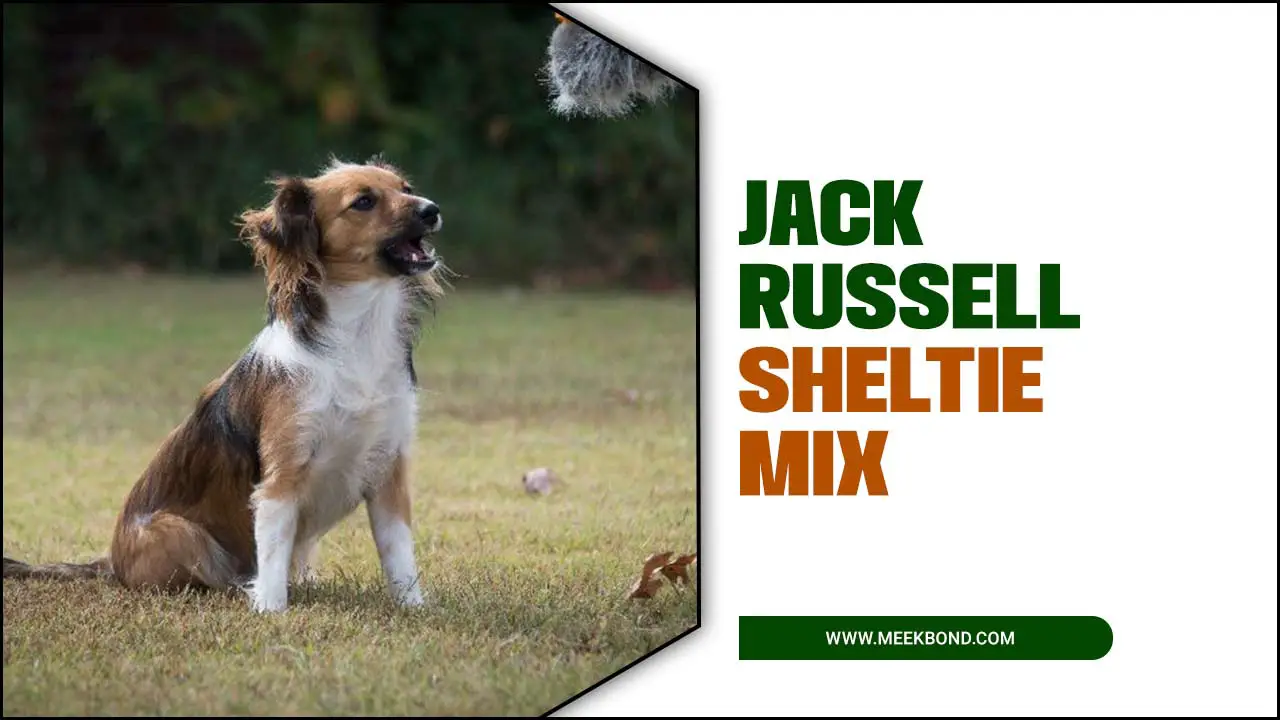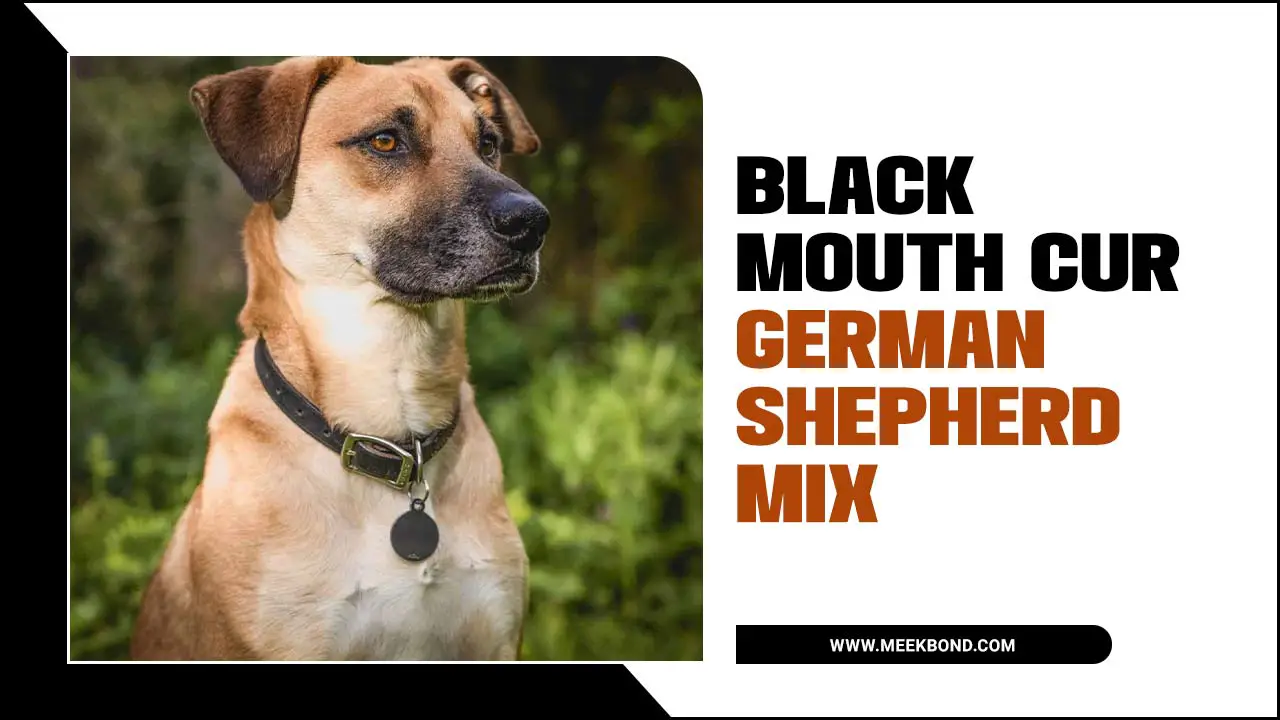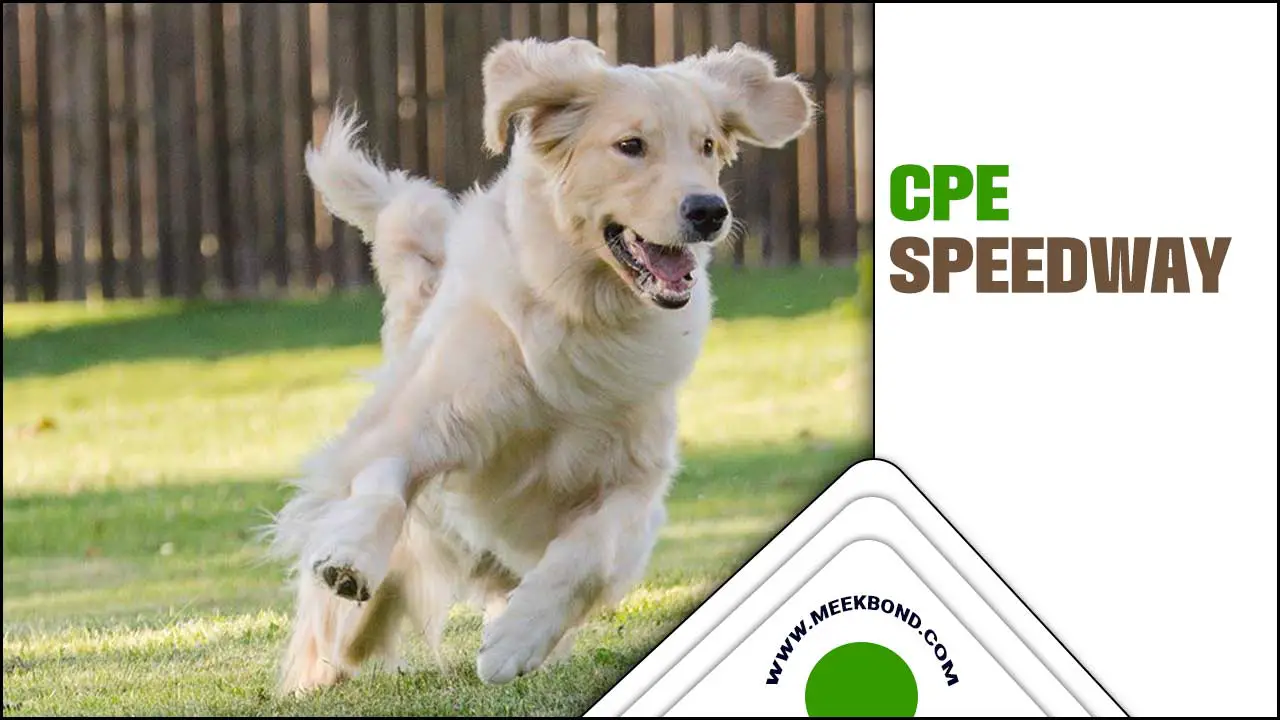TPLO is a surgical procedure used to treat dogs with torn cruciate ligaments in their knees. The cruciate ligaments are responsible for the knee joint’s stability; when they tear, it can cause significant pain and lameness in the affected leg.
TPLO stands for Tibial Plateau Leveling Osteotomy, which involves cutting and repositioning the tibial plateau to create a more stable joint. While this surgery has a high success rate, it is not uncommon for dogs to experience setbacks during recovery. As a responsible pet owner, it is important to be prepared for setbacks and understand how to help your dog overcome them.
We will explore some common setbacks dogs may experience during their TPLO recovery setback and provide tips on how to help your dog thrive. We will discuss the importance of staying patient and consistent with your dog’s rehabilitation exercises and the benefits of using pain management techniques and supplements.
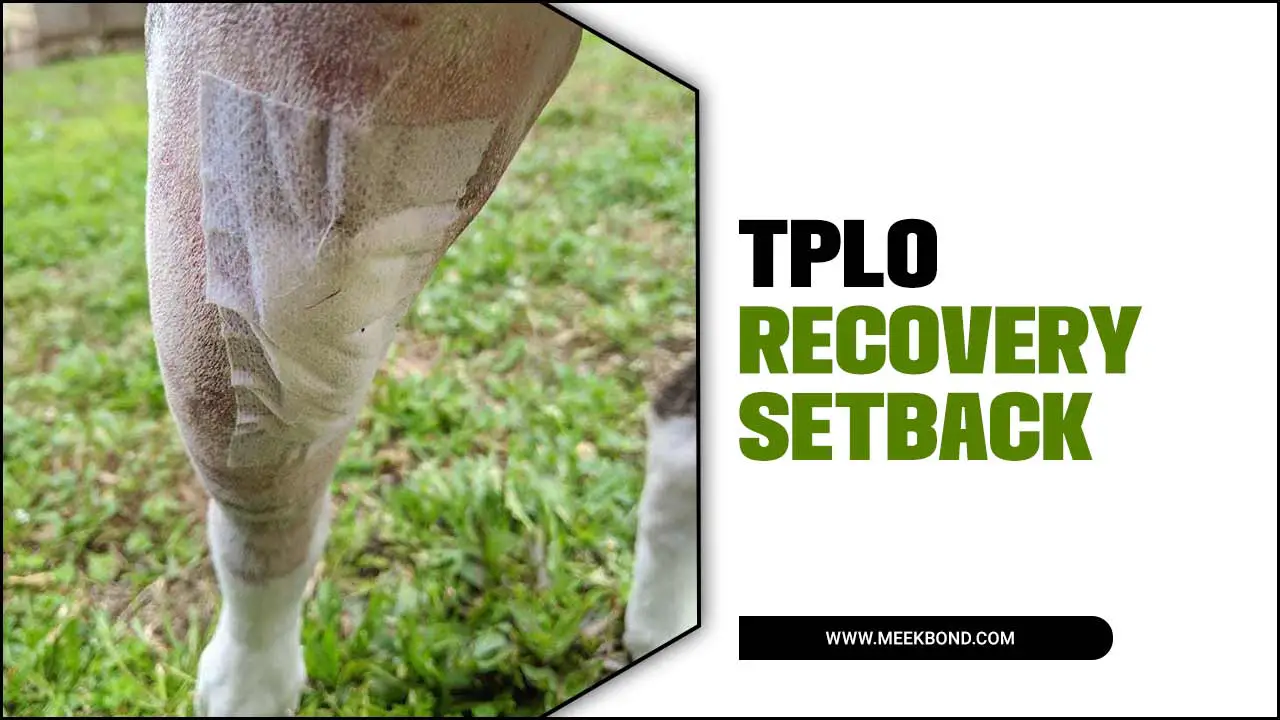
What Is TPLO Surgery?
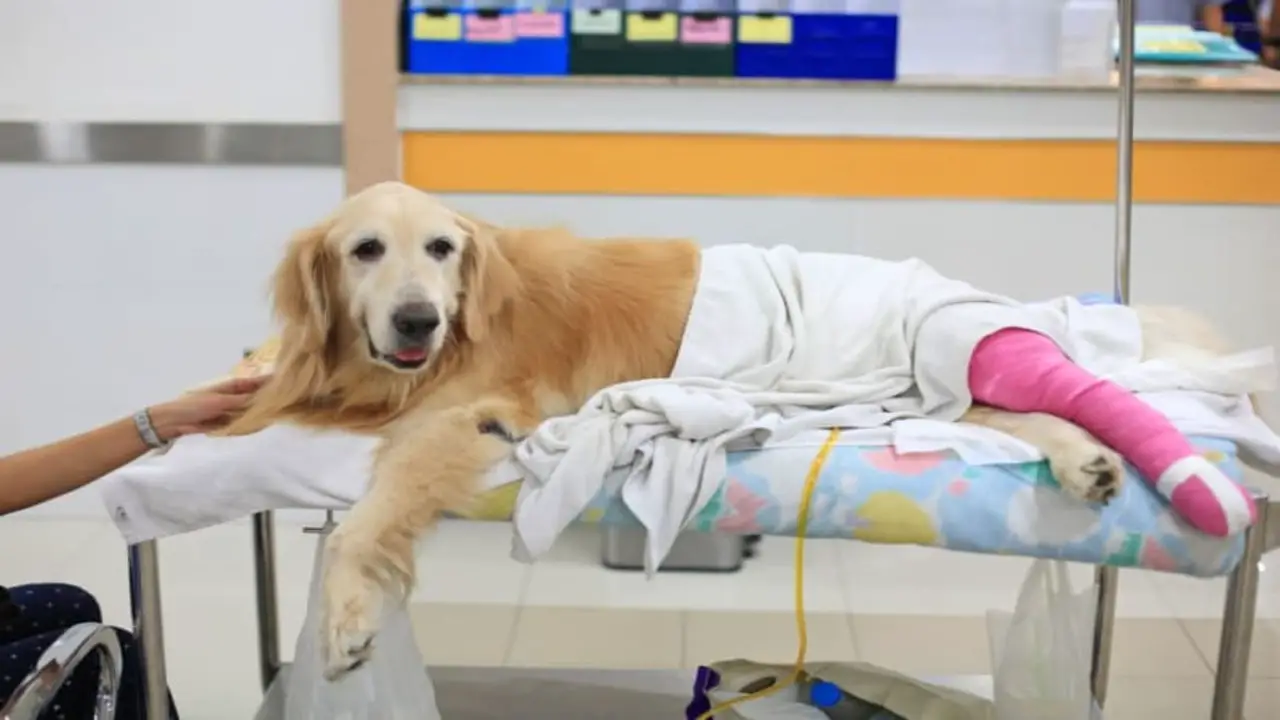
TPLO surgery is a type of orthopedic surgery performed on dogs to treat cranial cruciate ligament (CCL) injuries. The cranial cruciate ligament is a ligament located in the knee joint that helps to stabilize the joint during movement. When this ligament is torn or ruptured, it can cause significant pain and lameness in dogs, making it difficult for them to walk or engage in physical activities.
TPLO surgery involves making a cut in the tibia bone and rotating the top portion to change the knee joint’s angle. This helps to compensate for the torn ligament and stabilize the joint. The procedure is performed under general anesthesia and typically requires a few months of recovery time for the dog.
TPLO Recovery Setback: 7 Tips On How Your Dog Can Overcome Setbacks And Thrive
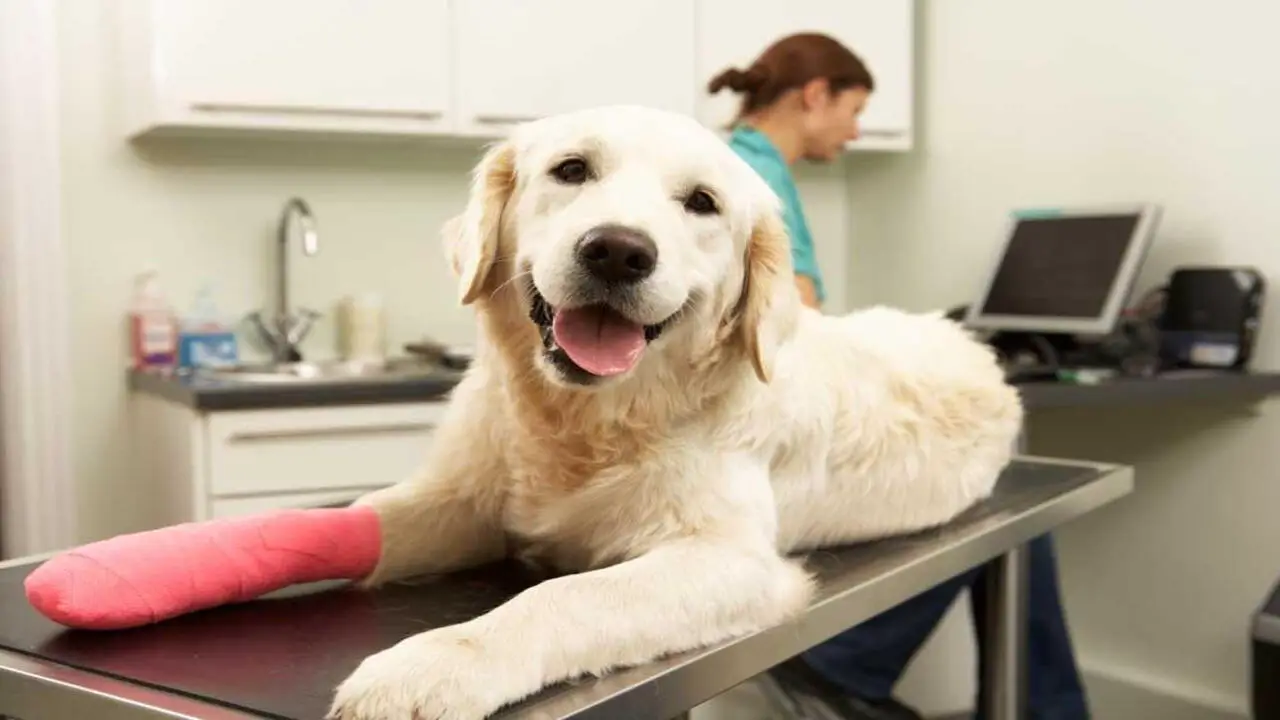
TPLO surgery is a standard procedure for treating a torn cranial cruciate ligament (CCL) in dogs. While the surgery can drastically improve a dog’s quality of life, it’s not always a smooth path to recovery. TPLO surgery is a highly effective treatment for dogs with torn cruciate ligaments.
However, setbacks can sometimes occur during recovery, and pet owners need to be prepared and know how to help their furry friends overcome these obstacles.
Setbacks can occur, but there are ways to help your dog overcome them and thrive. A TPLO recovery- setback can be frustrating and discouraging, but your dog can still thrive with the proper care and attention. Here are some tips to help your dog get back on track after a TPLO recovery setback:
1.Stay Calm And Patient
Dealing with a TPLO recovery-setback can be frustrating and overwhelming, but remaining calm and patient is important throughout the recovery process. Remember that setbacks are common and can occur for various reasons, such as overactivity or an underlying medical condition.
Following your veterinarian’s instructions and staying on top of your dog’s pain management, rehabilitation exercises, and rest periods are essential. Additionally, promptly communicate any concerns or changes in your dog’s condition with your veterinarian. Your dog can fully recover from a TPLO surgery setback with time and dedication.
2.Follow Your Veterinarian’s Advice
If your dog is experiencing a TPLO recovery-setback, following your veterinarian’s advice closely is essential. They can assess your dog’s condition and recommend the appropriate treatment plan. Your veterinarian may suggest a modified exercise program, medication changes, or additional rehabilitation techniques to help your dog recover.
It is crucial to attend all follow-up appointments and promptly communicate any concerns or changes in your dog’s condition to your veterinarian. Together, you can work to ensure your dog receives the best care possible and make a full recovery from their TPLO surgery setback.
3. Monitor Your Dog’s Activity Level
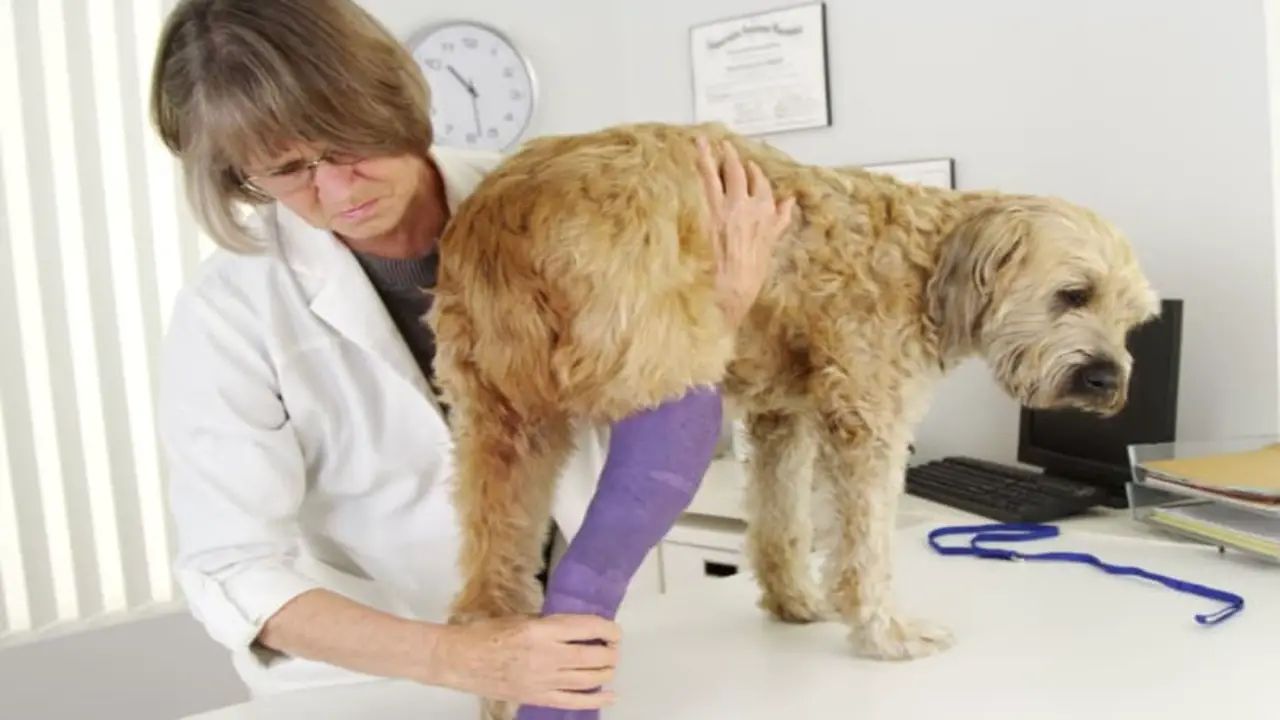
Monitor your dog’s activity level and limit their movement during the TPLO recovery-setback. Restricting your dog’s movements is important to prevent further damage to their injured leg. This means no running, jumping, or playing, and always keeping your dog on a leash when outside. Additionally, you may need to adjust their food intake and provide them with a soft, comfortable place to rest.
It’s important to follow your veterinarian’s instructions and attend all scheduled follow-up appointments to ensure your dog’s recovery progresses. Your dog can overcome the setback and fully recover after TPLO surgery with patience, dedication, and proper care.
4.Provide Plenty Of Rest And Comfort
During this setback in TPLO recovery, you must provide your pet with plenty of rest and comfort. Make sure to give your dog a quiet, comfortable space to rest, away from other pets and distractions. You may also need to adjust their daily activities and limit their exercise until they fully recover.
It’s crucial to follow the vet’s advice and stick to their recommended recovery plan to ensure your pet recovers fully. Additionally, you can offer your pet extra love and attention during this difficult time to help keep them calm and relaxed. With your patience and care, your pet will be on the road to recovery in no time.
5.Maintain A Healthy Diet
A healthy diet is important for your dog’s overall health and well-being, especially during recovery. Ensure that your dog’s diet is well-balanced and contains all the essential nutrients required for its recovery. You may also want to consider adding supplements to your diet, such as glucosamine and omega-3 fatty acids, which can help promote joint health and reduce inflammation.
Following your veterinarian’s instructions regarding your dog’s diet and feeding schedule is crucial to ensure they get the necessary nutrition to recover from the TPLO surgery and avoid any setbacks. Remember, a healthy diet can significantly affect your dog’s recovery and well-being.
6.Encourage Gentle Exercise
While limiting your dog’s activity during the first few weeks post-surgery is important, gentle exercise can help promote healing and prevent muscle atrophy. Under your veterinarian’s guidance, walking your dog on a leash for short periods can help your pet regain strength and mobility.
Swimming is another excellent low-impact exercise that can help with muscle building and cardiovascular health. If you notice any limping or discomfort during exercise, stop immediately and contact your veterinarian. It’s important to follow your veterinarian’s instructions and guidelines for exercise during recovery.
7.Consider Physical Therapy
If your dog has experienced a setback in their TPLO recovery, it may be beneficial to consider physical therapy. Physical therapy can help your dog regain strength, mobility, and flexibility during recovery. Your veterinarian may recommend exercises and stretches that can be done at home, or they may refer you to a certified canine rehabilitation therapist for more specialized care.
Physical therapy can also help prevent future setbacks by improving your dog’s overall physical health and preventing muscle weakness or atrophy. It’s essential to consult with your veterinarian before starting any physical therapy program to ensure it’s safe and appropriate for your dog’s needs.
Remember, setbacks during TPLO recovery are common, but with patience, diligence, and the right care, your dog can fully recover and return to their happy, active life. Don’t hesitate to contact your veterinarian with any concerns or questions about your dog’s recovery process.
How To Prepare For Your Dog’s TPLO Surgery
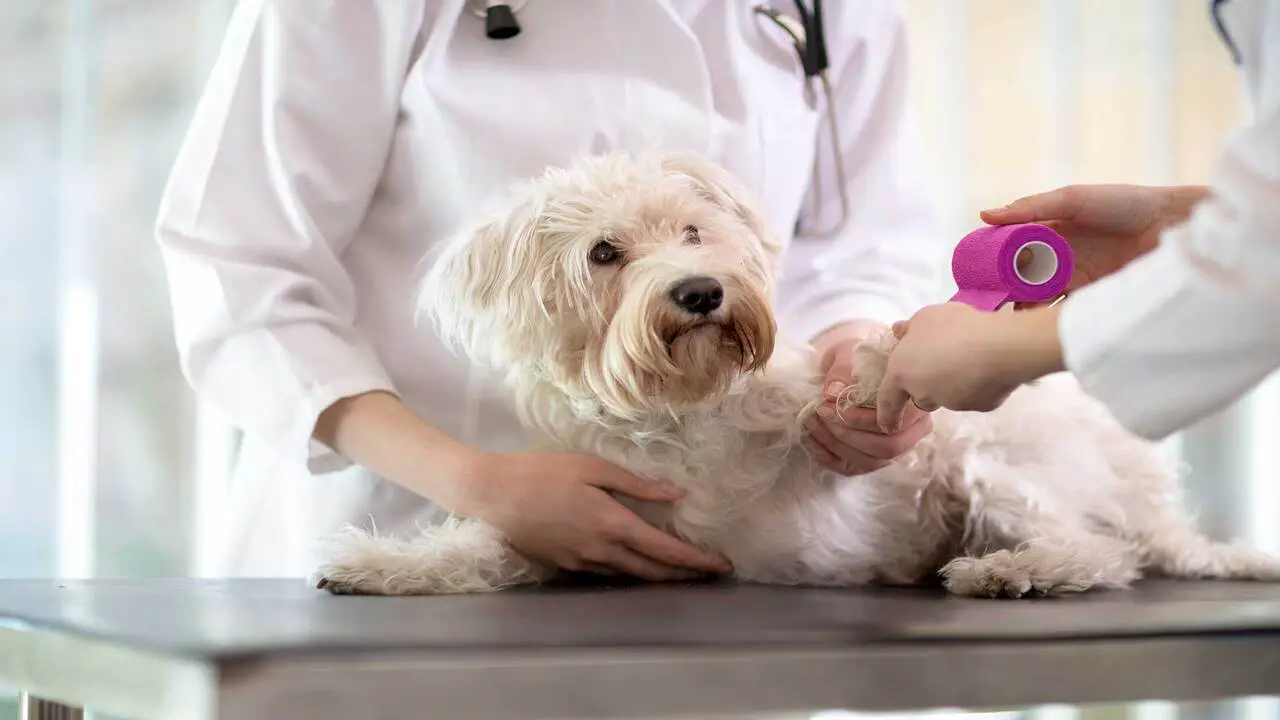
As a dog owner, seeing your furry friend in pain can be difficult. If your dog has a torn cranial cruciate ligament (CCL), your veterinarian may recommend a Tibial Plateau Leveling Osteotomy (TPLO) surgery to repair the damage. It’s essential to be prepared for this procedure for your pet’s comfort and peace of mind. Here are some tips on how to prepare for your dog’s TPLO surgery:
- Consult with your veterinarian: Your vet will be able to assess your dog’s condition and determine if TPLO surgery is necessary. They will also provide you with instructions on how to prepare for the surgery.
- Follow pre-surgery instructions: Your vet will give instructions on preparing your dog for surgery. This may include fasting before the surgery, stopping certain medications, and ensuring your dog gets enough rest.
- Plan for post-surgery care: Your dog will need rest and care afterward. Plan on helping your dog stand up, go to the bathroom, and move around during recovery.
How To Prepare Your Home For Your Dog’s Recovery
As a pet owner, it’s always essential to ensure that your furry friend is well taken care of, especially during their recovery from an illness or surgery. To ensure a quick and comfortable recovery for your dog, you’ll need to adjust your home environment. Here’s how to prepare your home for your dog’s recovery:
- Create a comfortable and quiet space: Your dog will need a quiet and comfortable space to rest and recover. You can create a designated area where your dog can relax and feel safe.
- Remove hazardous items: Remove any hazardous items your dog could potentially injure themselves with. This includes sharp objects, toxic substances, and any household items that could pose a risk.
- Adjust their diet: Your dog may require a special diet during recovery. Consult with your vet to determine the best nutritional plan for your dog.
- Limit their activity: Your dog must rest and limit their activity during recovery.
How To TPLO Recovery Surgery For Dogs?
TPLO (tibial plateau leveling osteotomy) is a surgical procedure commonly recommended for dogs with a torn cranial cruciate ligament (CCL). While the surgery can improve a dog’s mobility and quality of life, recovery can be challenging. Here are some tips on how to manage the TPLO recovery process for your furry friend:
- Follow your veterinarian’s post-operative instructions carefully. This may include administering medication, changing bandages, and limiting your dog’s activity.
- Provide a comfortable and safe recovery space for your dog. Use a comfortable dog bed, elevate it if necessary, and place it in a quiet, cosy location away from distractions.
- Help your dog with mobility by using a harness or sling to support them when walking. Avoid stairs, jumping, and rough play.
- Encourage your dog to drink water and eat small, frequent meals. You may need to feed them a special diet or provide supplements to aid in their healing process.
Common Tplo Recovery-Setbacks
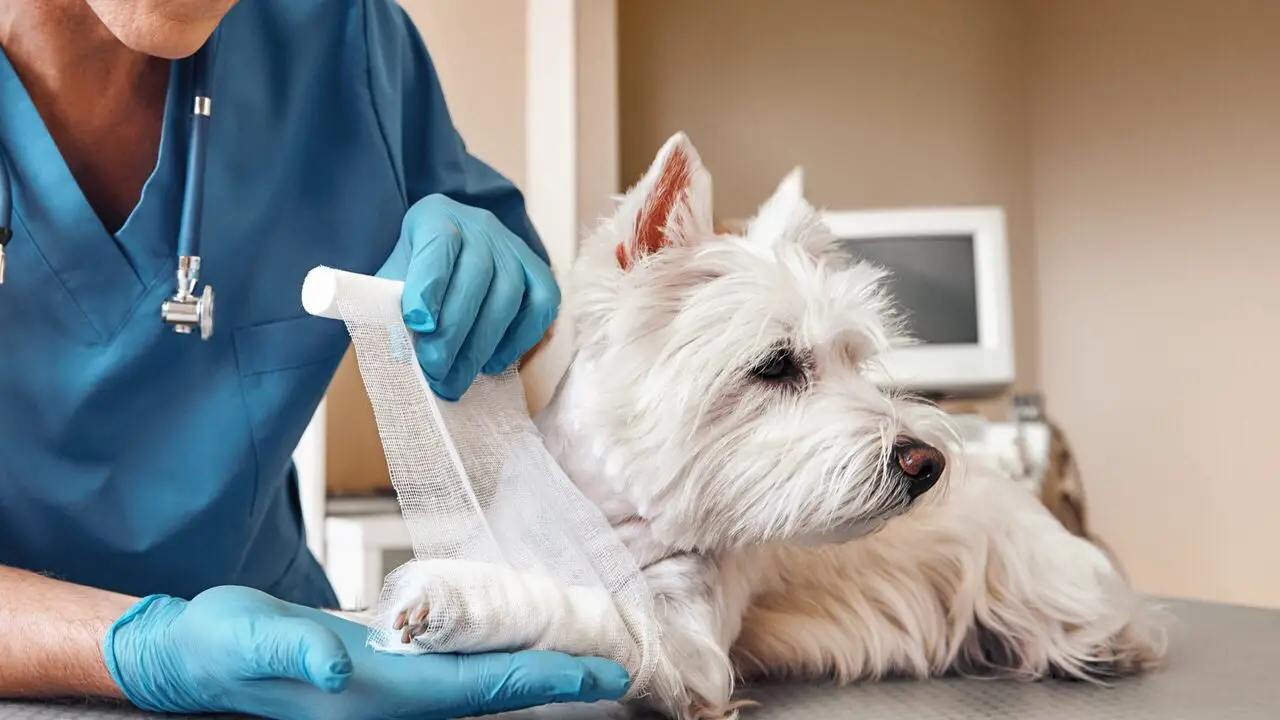
TPLO (Tibial Plateau Leveling Osteotomy) is a standard surgical procedure for dogs to correct cruciate ligament injuries. While the procedure has a high success rate, there are some common TPLO recovery-setbacks that pet owners should be aware of. These setbacks can prolong the recovery time and affect the overall outcome of the surgery. Some of the most common TPLO recovery-setbacks include:
- Swelling: Swelling is a normal part of the healing process, but excessive swelling can cause discomfort and hinder mobility.
- Infection can occur at the surgical site and cause pain, fever, and swelling.
- Decreased appetite: Dogs may experience a decreased appetite after surgery due to pain, medications, and changes in routine.
- Limited mobility: Restricting a dog’s activity during the recovery period is important, but too much restriction can cause muscle atrophy and joint stiffness.
Physical Therapy Exercises For Your Dog
Physical therapy exercises for your dog can be beneficial for a number of reasons. Like humans, dogs can suffer from various conditions leading to decreased mobility, chronic pain, and reduced quality of life. Whether your dog has undergone surgery, suffers from arthritis, or simply needs to improve strength and flexibility, physical therapy exercises can help.
Some common exercises include range-of-motion, balance, coordination, and stretching exercises. These exercises can be tailored to your dog’s specific needs and abilities and can be done in the comfort of your own home or with the guidance of a trained professional.
Dealing With TPLO Recovery-Setbacks
Recovering from a TPLO surgery can be a long and challenging process, but it can be even more frustrating when setbacks occur. Dealing with TPLO recovery-setbacks can be discouraging, especially when progress is made. Common setbacks include excessive swelling, infections, and limping. It’s important to remain calm and seek veterinary attention immediately when these occur.
Veterinarians may prescribe antibiotics or anti-inflammatory medication to help reduce swelling and pain. Additionally, physical therapy and rehabilitation exercises may be necessary to help regain strength and mobility in the affected limb. It’s important to monitor your pet’s behaviour and follow post-operative instructions carefully to prevent setbacks from occurring.
Managing Pain And Discomfort During Recovery
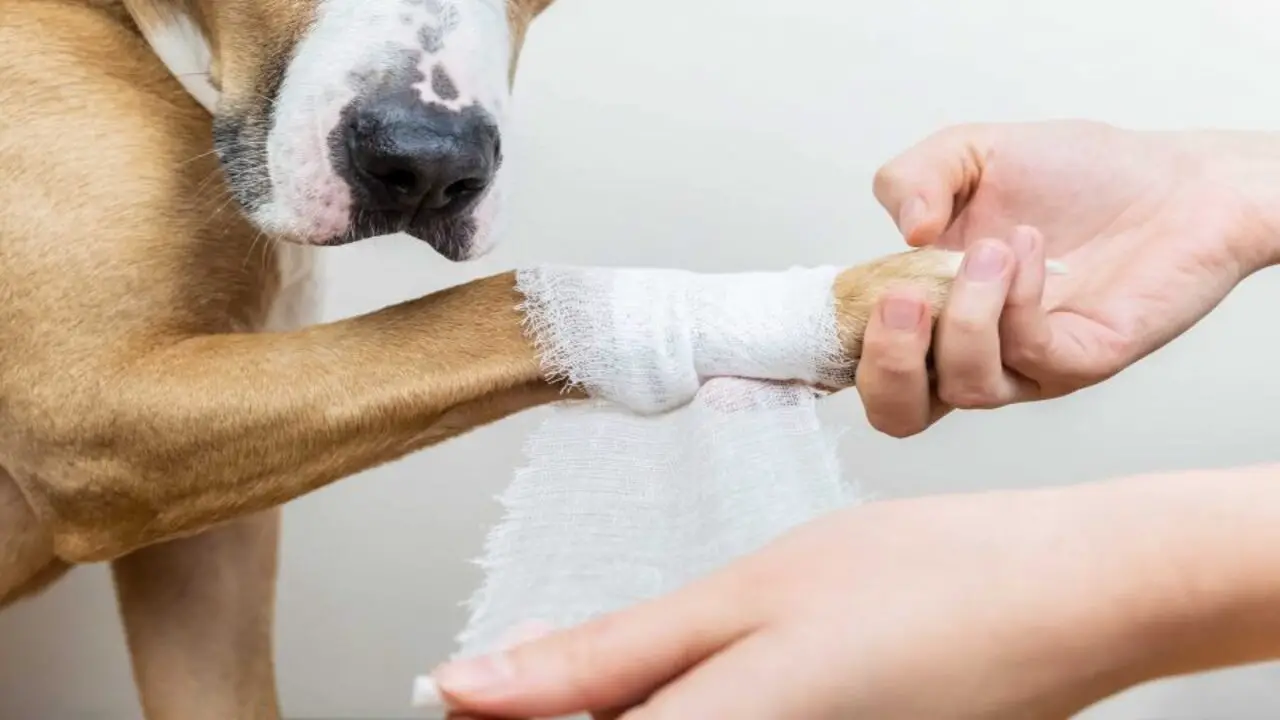
Managing pain and discomfort during recovery is essential to the healing process. Whether you have undergone surgery or are recovering from an injury, it is crucial to have a pain management plan in place to help alleviate any discomfort or pain. Depending on the severity of your condition, your doctor may prescribe pain medication to help manage your pain.
However, it is important to note that pain medication can have side effects, and you should always follow your doctor’s instructions carefully. In addition to medication, there are other steps you can take to manage pain and discomfort during recovery. Applying ice packs or heat pads to the affected area can help reduce inflammation and promote healing. Exercise such as stretching or walking can also help reduce pain and discomfort.
Conclusion
Dogs have been mankind’s best friend for thousands of years. They are loyal, affectionate, and always eager to please their owners. Whether it’s a small Chihuahua or a large Great Dane, dogs come in all shapes and sizes. However, dogs are not just working animals but also beloved pets that bring joy and companionship to millions of households worldwide.
A TPLO recovery setback can be disheartening for pet owners. However, it’s essential to communicate with your veterinarian and develop a plan to overcome the setback. Remember to monitor your dog’s progress, maintain a healthy diet, and provide a safe, comfortable environment for them to heal.
Your veterinarian can be an invaluable resource throughout the recovery process, so don’t hesitate to reach out for guidance and support. Together, you and your furry friend can overcome setbacks and thrive.
FAQs
When Can My Dog Jump After TPLO?
Your dog should not jump or engage in any strenuous activity for at least 12 weeks after TPLO surgery to allow proper healing of the affected knee joint. It is important to follow your veterinarian’s post-operative instructions and rehabilitation plan to ensure a smooth recovery for your dog.
How Often Does TPLO Surgery Fail?
According to the American College of Surgeons, therapeutic plasmalogetic lobe resection (TPLO) surgery failure rate is between 3% and 10%. The exact rate can vary depending on a number of factors, including the specific surgery, the patient’s condition, and the skill and experience of the surgeon.
Can Dogs Run After TPLO?
Yes, dogs can run after the surgery of TPLO (tibial plateau levelling osteotomy). However, it is important to follow the post-operative instructions given by the veterinarian, which may include restricted activity levels and physical therapy to ensure proper healing and recovery. Gradual reintroduction of exercise and activity is recommended to avoid re-injury.
Why Is My Dog Limping 1 Year After TPLO Surgery?
There could be several reasons your dog is limping 1 year after TPLO surgery. It is possible that the surgery did not fully correct the problem, and the joint is still unstable. It is also possible that your dog has developed arthritis or another joint-related condition. Other potential causes include muscle weakness or injury, nerve damage, or a new injury or trauma.
Is Clicking Normal After TPLO?
It is normal to hear clicking sounds after a TPLO surgery if it is not accompanied by other symptoms such as pain, swelling, or lameness. The clicking sound is usually caused by the presence of hardware used in the surgery and will typically resolve as the dog recovers and heals.

Aquarium passion is all about connecting with the aquatic life and providing education to the public on the importance of these creatures. We showcase a wide variety of marine life through our exhibits as well as working with schools to provide unique learning opportunities for students of all ages.

